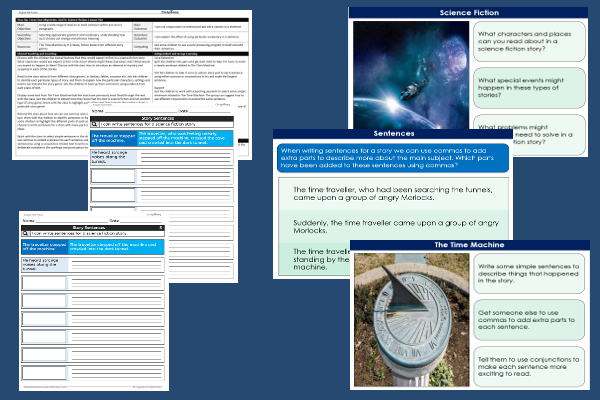Lesson Five – Sentence Extensions

This English teaching pack for Key Stage Two gets the children to select and embed a selection of word phrases and use conjunctions to extend a range of different sentences from a science fiction story.
The class can compose simple sentences for a partner to make more complex by using commas and conjunctions to extend clauses and add phrases.
Download this teaching pack including a lesson plan, classroom activities and an interactive presentation to select and embed a selection of word phrases and use conjunctions to extend a range of different sentences from a science fiction story
Activities in this teaching pack include a set of differentiated worksheets to select and model how to embed word phrases and use conjunctions to extend a selection of different sentences that have been extracted from a science fiction story.
The interactive presentation gets the children to explore how to embed phrases and use conjunctions to extend sentences from a science fiction story.
This lesson is part of an English scheme of work to get the children to select characters, settings and events to use when writing science fiction stories, identify words that contain the ible suffix and practise using commas and conjunctions to write complex sentences. There are teaching activities for shared learning, differentiated worksheets to support independent learning and interactive presentations to introduce concepts and key skills.
-

Determinant Lists
Explain and model how to make lists of objects used and found in different locations to match the correct determinants of a and an
-

English SPAG Assessment
Assess abilities in composing sentences for fiction and non-fiction using the correct spellings, punctuation marks and grammar vocabulary phrases
-

Maths Arithmetic Assessment
Assess abilities in solving arithmetic number problems for addition, subtraction, multiplication and division when working with informal and formal written calculations
-

Environment
Identify and describe some of the special landscapes and locations that can be found in the world and reflect on how they can be protected and preserved for the future
